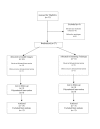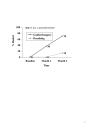Evaluation of guided imagery as treatment for recurrent abdominal pain in children: a randomized controlled trial
- PMID: 17090333
- PMCID: PMC1660537
- DOI: 10.1186/1471-2431-6-29
Evaluation of guided imagery as treatment for recurrent abdominal pain in children: a randomized controlled trial
Abstract
Background: Because of the paucity of effective evidence-based therapies for children with recurrent abdominal pain, we evaluated the therapeutic effect of guided imagery, a well-studied self-regulation technique.
Methods: 22 children, aged 5-18 years, were randomized to learn either breathing exercises alone or guided imagery with progressive muscle relaxation. Both groups had 4-weekly sessions with a therapist. Children reported the numbers of days with pain, the pain intensity, and missed activities due to abdominal pain using a daily pain diary collected at baseline and during the intervention. Monthly phone calls to the children reported the number of days with pain and the number of days of missed activities experienced during the month of and month following the intervention. Children with < or = 4 days of pain/month and no missed activities due to pain were defined as being healed. Depression, anxiety, and somatization were measured in both children and parents at baseline.
Results: At baseline the children who received guided imagery had more days of pain during the preceding month (23 vs. 14 days, P = 0.04). There were no differences in the intensity of painful episodes or any baseline psychological factors between the two groups. Children who learned guided imagery with progressive muscle relaxation had significantly greater decrease in the number of days with pain than those learning breathing exercises alone after one (67% vs. 21%, P = 0.05), and two (82% vs. 45%, P < 0.01) months and significantly greater decrease in days with missed activities at one (85% vs. 15%, P = 0.02) and two (95% vs. 77%. P = 0.05) months. During the two months of follow-up, more children who had learned guided imagery met the threshold of < or = 4 day of pain each month and no missed activities (RR = 7.3, 95%CI [1.1,48.6]) than children who learned only the breathing exercises.
Conclusion: The therapeutic efficacy of guided imagery with progressive muscle relaxation found in this study is consistent with our present understanding of the pathophysiology of recurrent abdominal pain in children. Although unfamiliar to many pediatricians, guided imagery is a simple, noninvasive therapy with potential benefit for treating children with RAP.
Figures
References
Publication types
MeSH terms
Grants and funding
LinkOut - more resources
Full Text Sources
Medical
Miscellaneous



